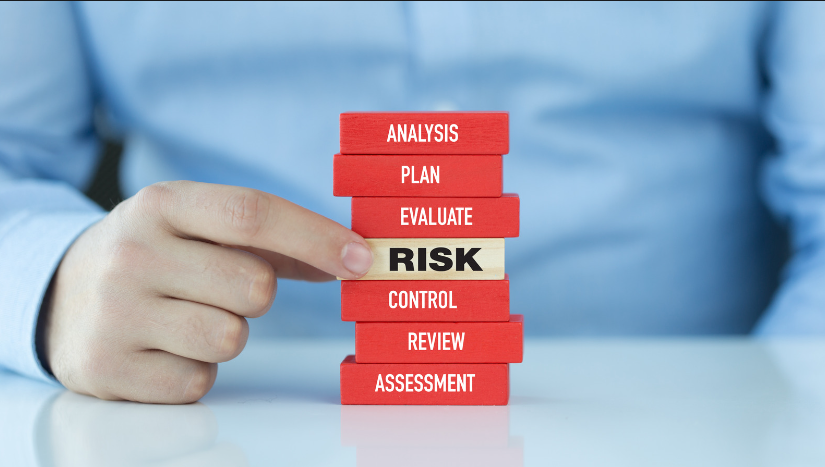Understanding the MITRE ATT&CK Framework: Navigating Cyber Threats in 2024
The MITRE ATT&CK framework acts as a manual for cybersecurity experts outlining the strategies, tactics and techniques utilised by cyber attackers. Essentially it functions as a roadmap of the cyber adversaries playbook providing insights into their approaches for breaching networks extracting data and evading detection. By categorising attack methods based on real world observations ATT&CK empowers defenders to better. Predict potential threats.
In the changing realm of cybersecurity the significance of the ATT&CK framework cannot be overstated. It does not aid security teams in identifying and addressing threats promptly. Also promotes a shared language and understanding among professionals. This unified approach to discussing and addressing cybersecurity challenges is vital for building defence mechanisms making ATT&CK an essential tool in the ongoing fight against digital dangers.
What is MITRE ATT&CK?
MITRE ATT&CK serves as a repository of adversary tactics and techniques accessible globally. Drawing from real world instances. Explains the diverse methods hackers employ to breach networks, circumvent defences, remain covert and fulfil their objectives.
The acronym ATT&CK stands for Adversarial Tactics, Techniques and Common Knowledge—highlighting its aim to help individuals grasp how adversaries operate and what strategies they utilise.
The nonprofit organisation known as the Corporation, which operates funded research and development centres developed ATT&CK. This tool is crucial for cybersecurity professionals as it equips them with a compilation of attacker techniques and strategies to enhance their defence against cyber threats.
What are Tactics in the ATT&CK Framework?
In the ATT&CK Framework, “tactics” are like the main goals or reasons behind each step of a cyberattack. Instead of just looking at what damage an attack has caused, tactics help us understand what the attackers are trying to do at each stage. It’s a bit like figuring out the story behind the action in a movie, rather than just seeing the action scenes without knowing why they’re happening.
Here’s a simple breakdown of the 7 tactics in the Enterprise ATT&CK matrix:
- Reconnaissance: Like a thief casing a house before a break-in, attackers gather information about their target to plan their attack.
- Resource Development: This is where attackers prepare the tools and resources they’ll need, like creating fake accounts or setting up servers to launch attacks from.
- Initial Access: The digital equivalent of picking the lock to get in, this is the method attackers use to first get into a computer or network.
- Execution: Once inside, they start to run their malicious activities, like a burglar moving inside the house.
- Persistence: Like hiding a spare key to use later, this ensures they can get back into the system even if discovered and removed.
- Privilege Escalation: This is where the attacker gains higher access privileges, like a thief finding the safe key to access more valuable items.
- Defence Evasion: Here, attackers hide their activities to avoid being detected, like wearing gloves to not leave fingerprints.
Additional Tactics:
- Credential Access: Stealing passwords and other login information so they can move around more freely, like a thief finding a master key.
- Discovery: Looking around inside the network to understand what’s there and how it’s set up, similar to a burglar scoping out the best goods to steal.
- Lateral Movement: Moving from one part of the network to another, like a thief going from room to room.
- Command & Control: Setting up a way to control the compromised systems from afar, like a burglar having a remote control to disable the house alarm.
- Collection: Gathering the data they’re after, like collecting jewellery and electronics before leaving.
- Exfiltration: Getting the stolen data out without being noticed, akin to a thief loading the loot into a getaway car.
- Impact: The final goal, which could range from locking files for ransom to deleting data, similar to a thief either stealing valuables or vandalising the property for other reasons.
What are Techniques in the ATT&CK Framework?
Within the ATT&CK Framework, “techniques” are the exact steps or actions that attackers take to reach their goals, which are based on the overarching goals set out by “tactics.” Here are 10 methods that are often used in the framework:
- Phishing: Phishing is the act of sending fake emails to people to get them to give up personal information or install malware.
- Spear Phishing: A more targeted form of phishing where specific individuals or organisations are targeted.
- Drive-by Compromise: Infecting a user’s computer with malware by getting them to visit a compromised website.
- Pass the Hash: If someone tries to steal a user’s information by getting their hash (a type of digital signature) instead of their password, this is called “pass the hash.”
- Exploitation for Privilege Escalation: Taking advantage of flaws in a system to get more access than was originally allowed is called exploiting privilege escalation.
- Credential Dumping: Credential Dumping is the act of taking login information, like usernames and passwords, from a system so that someone else can use it to get in without permission.
- Remote File Copy: Moving files from one machine to another to steal data or spread malware is called remote file copy.
- Man in the Middle (MitM) Attack: Listening in on conversations between two people to steal or change information without them knowing.
- Data Encrypted for Impact: To make an impact, data is encrypted on the victim’s machine (like in ransomware attacks) and they are asked to pay to decrypt it.
- Command and Scripting Interpreter: Running orders through a system’s built-in command shell, usually to do harm.
The Genesis and Evolution of MITRE
MITRE is one of the most important government-funded study groups. It was founded in 1958 and has roots in the Massachusetts Institute of Technology (MIT). MITRE has offices in Bedford, MA, and McLean, VA. It has led many groundbreaking projects that have changed technology and national security in a way that can’t be erased. Its work on the FAA’s air traffic control system and the AWACS overhead radar system, in particular, shows how creatively it can solve hard problems. MITRE is not an acronym, despite what many people think. It is a name meant to inspire innovation and research success.
The Mission of MITRE ATT&CK
The ATT&CK framework is at the heart of MITRE’s cybersecurity work and shows how committed the organisation is to improving global cyber defence skills. The goal of the ATT&CK system is to create a complete list of all the known attacks and strategies used by attackers. Not only does it help the cybersecurity community, but it also helps government, educational, and business organisations talk about online threats in a common language. ATT&CK is based on a structured adversary emulation exercise from MITRE’s Fort Meade Experiment. Its goal is to standardise the taxonomy of cyber adversary behaviour so that entities can talk about cyber risks more clearly and take action.
Navigating the ATT&CK Matrices
The ATT&CK framework is made up of three main grids, each one designed for a different type of cyberattack and stage of the attack:
1. Enterprise ATT&CK Matrix
- Focus: Post-compromise behaviour within corporate networks.
- Purpose: Assists in prioritising network defence by detailing attacker actions post-infiltration.The focus of the enterprise ATT&CK matrix is on how people act after a breach in business networks.
2. PRE-ATT&CK Matrix
- Focus: Pre-compromise activities, primarily external reconnaissance and planning.
- Purpose: Aids security teams in understanding and identifying pre-attack behaviours and strategies.PRE-ATT&CK Matrix Focus: Activities that happen before a compromise, mostly planning and spying on the outside.
3. Mobile ATT&CK Matrix
- Focus: Attacks targeting mobile devices, including remote and network-based tactics.
- Purpose: Addresses the unique challenges of securing mobile platforms against cyber threats.The focus of the mobile ATT&CK matrix is on attacks on mobile devices, such as those that use remote and network-based methods.
Understanding MITRE ATT&CK Through Examples
Imagine: An attacker who wants to get into a company’s network might start with reconnaissance (PRE-ATT&CK), which means finding weak spots and gathering information. Upon gaining Initial Access (Enterprise ATT&CK), they could leverage techniques like Phishing or Exploit Public-Facing Applications to infiltrate the network. As they establish Persistence and escalate Privileges, they might deploy Credential Dumping techniques to deepen their access. Throughout, they could employ Defence Evasion tactics, such as Obfuscated Files or Information, to remain undetected. For an organisation with a mobile workforce, understanding threats within the Mobile ATT&CK matrix, like Exploit via Charging Station or Security Software Discovery, becomes critical.
The Imperative of ATT&CK Matrices in Cyber Defense
When you use the ATT&CK structure, you can get a detailed, tactic-and-technique-level understanding of how your enemies act. For people who work in cybersecurity, this means being able to build targeted defences, do thorough danger assessments, and respond to incidents with knowledge. Additionally, the framework is always changing, with regular updates that include the newest threat data. This makes sure that it stays an important tool for fighting modern cyber threats.
Top 10 Trends Influencing the MITRE ATT&CK Framework in 2024
1. More focus on cloud security:
As cloud services increasingly become part of the corporate landscape, the new breed of hackers is finding new ways to breach the cloud. The 2024 update of the MITRE ATT&CK framework increased with cloud-specific strategies and techniques to give detailed recommendations on how cloud infrastructure is protected against multi-stage attacks. This is a clear indication that cloud security is becoming an increasingly important aspect of the cybersecurity landscape and is driving businesses to develop a cloud-first approach to threat finding and response.
2. The proliferation of AI and machine learning in cyber defence:
According to the MITRE ATT&CK methodology, AI and ML are becoming ever-more important in cyber defence. These technologies can be used to spot and stop attacks, even before they occur, by detecting patterns and outliers. The use of AI and ML is more and more, and protection should thus be more proactive and adaptive. There is less reliance on the reactive side.
3. The supply chain attacks have become more sophisticated:
The sophistication in cyber supply chain attacks has increased, by using the methods referred to in the MITRE ATT&CK framework to breach networks through third-party suppliers and software updates. This trend reflects very strongly how important it is to protect the entire supply chain. It also indicates how crucial it is that thorough and high-quality risk assessments are carried out and that strong security measures are built into the whole chain of links.
4. Focus on Behavioural Analytics:
It has been more popular to use behavioural analytics to find strange behaviours which could be signs of cyber dangers. Utilising techniques in the MITRE ATT&CK framework, businesses can pinpoint change from their usual behaviour, which can help them spot possible security breaches in an early stage. This drive toward behavioural analytics gives even more weight toward having security solutions that are flexible and able to change in response to new threats.
5. IoT and OT attacks are increasing:
As the Internet of Things and Operational Technology become more integrated into daily life, hackers are using these devices as back doors into networks. In 2024, the MITRE ATT&CK framework is going to include strategies and techniques designed to protect against the vulnerabilities of IoT and OT devices.
6. Added to Focus on Insider Threats:
The MITRE ATT&CK structure is giving more attention to insider threats, whether they are intentionally malicious or not. To reduce the threats that insiders create, companies are using more sophisticated ways to locate and neutralise them. This trend points out that people are becoming more aware of how complex and multifaceted cybersecurity threats are and how important it is for plans to be complete: studying how people behave is now an important element of any cybersecurity practice.
7. Integration of Threat Intelligence Platforms:
Another trend is the integration of threat intelligence platforms with the MITRE ATT&CK structure. It allows organisations to share and receive useful information on new threats. With the work in hand, we are able to change our defences fast, to match the newest tricks and strategies attackers are using. This makes the whole protection system more stable.
8. Adoption of Zero Trust Architecture:
The “never trust, always verify” approach is already being taken widely, and the MITRE ATT&CK framework is being taken as a guide to putting Zero Trust architectures into practice. This signals the trend of changing cybersecurity, from a defensive approach built around perimeters to a holistic approach that protects all users, devices, and networks, regardless of their location.
9. Compliance with regulations is also a driving force behind framework adoption:
As more regulatory bodies realise the importance of organised cybersecurity frameworks, compliance with the MITRE ATT&CK framework is starting to become common. Not only are organisations using the framework to enhance their security, but they are using it to meet legal requirements as well. This proves how much the framework is shaping cybersecurity policies and standards.
10. Community-Driven Evolution of the Framework:
The MITRE ATT&CK framework is being evolved through input from the community. Cybersecurity experts around the world are sharing knowledge and information on new attack methods. The shift toward a collaborative and open-source approach to framework development makes it up-to-date and complete by drawing on the knowledge and experience of all in the defence community.
Utilising the MITRE ATT&CK Matrix for Cybersecurity Defense
Navigating cybersecurity threats effectively requires a deep understanding of how attackers operate. The MITRE ATT&CK Matrix offers a strategic framework to identify and counteract these operations. Here’s a step-by-step guide on how to leverage the ATT&CK Matrix for enhanced cybersecurity defence:
Step 1: Understand the Matrix Structure
The ATT&CK Matrix is organised with tactics displayed across the top, representing the objectives attackers aim to achieve, such as Initial Access, Execution, Persistence, etc. Under each tactic, you’ll find a list of techniques that describe specific methods attackers use to accomplish their goals. This arrangement helps defenders conceptualise the attack lifecycle from start to finish.
Step 2: Identify Relevant Tactics and Techniques
Begin by reviewing the matrix to identify which tactics and techniques are most relevant to your organisation. Not all attacks will follow the matrix from left to right, but understanding the full scope helps anticipate potential attack paths. Focus on areas where your organisation may be particularly vulnerable.
Step 3: Map Out Attack Scenarios
Using the matrix, map out potential attack scenarios that could target your organisation. For example, if you’re concerned about email phishing (a technique under Initial Access), consider how an attacker might move to the next steps, like executing malicious software or establishing persistence in your network.
Step 4: Implement Defensive Measures
For each technique identified in your scenarios, research and implement defensive measures. This could involve technical solutions, such as antivirus software or email filtering, as well as training employees to recognize phishing attempts. The matrix also provides information on mitigations for each technique, offering guidance on how to reduce vulnerabilities.
Step 5: Monitor for Suspicious Activity
Implement monitoring tools and procedures to detect the use of these techniques in real-time. This step is crucial for identifying attacks early in the process. Use behaviour analytics to spot anomalies that could indicate an attack, such as unusual access patterns or file movements.
Step 6: Regularly Review and Update Defences
Cyber threats constantly evolve, and so do the tactics and techniques in the MITRE ATT&CK Matrix. Regularly review the matrix for updates and reassess your defensive measures. This ensures your organisation stays ahead of potential threats.
Step 7: Share and Learn from Incidents
When attacks occur, document and analyse every step of the process. Share findings with your team and the broader cybersecurity community when appropriate. Learning from these incidents can improve your defences and help others bolster their security.
Comparing MITRE ATT&CK to Lockheed Martin’s Cyber Kill Chain
Comparing the Lockheed Martin Cyber Kill Chain with the MITRE ATT&CK framework offers insights into two influential models in cybersecurity that outline the sequence of steps attackers may take. Here’s how they stack up against each other in their approach to defining the anatomy of a cyber attack:
| Lockheed Martin Cyber Kill Chain | MITRE ATTaCK Framework |
| 1. Reconnaissance – Gathering information about the target before launching an attack. | 1. Initial Access – Gaining entry into the network. |
| 2. Weaponization – Creating malware designed to exploit the target. | 2. Execution – Running malicious code. |
| 3. Delivery – Transmitting the malware to the target system. | 3. Persistence – Maintaining a foothold within the target network for continued access. |
| 4. Exploitation – Activating the malware to breach the target’s defences. | 4. Privilege Escalation – Gaining higher-level permissions. |
| 5. Installation – Installing the malware on the target system to ensure the attacker’s control. | 5. Defence Evasion – Avoiding detection by security measures. |
| 6. Command and Control – Remotely controlling the compromised system. | 6. Credential Access – Stealing usernames, passwords, and other authentication methods. |
| 7. Actions on Objectives – Conducting actions to achieve their goals, such as data exfiltration. | 7. Discovery – Identifying resources and data of interest on the network. |
What Can Businesses can do with MITRE ATT&CK?
MITRE ATT&CK serves as a versatile framework that organisations can leverage in various ways to bolster their cybersecurity posture. Below are the key applications of the MITRE ATT&CK framework:
- Creating Adversary Emulation Scenarios: Organisations can utilise ATT&CK to simulate attacks based on known adversary behaviours, allowing them to test and strengthen their defences against specific techniques employed by attackers.
- Planning Red Team Exercises: The framework aids in designing red team activities that simulate realistic attack scenarios, helping to identify potential security weaknesses by attempting to bypass existing network defences.
- Developing Behavioral Analytics: By using ATT&CK, security teams can design and refine behavioural analytics that detect unusual activities signalling a potential security breach, enhancing the detection of malicious operations within their systems.
- Evaluating Defence Mechanisms: ATT&CK provides a detailed adversary model that focuses on behaviour, enabling organisations to conduct thorough assessments of their current security measures, identify gaps in their defences, and improve their overall security strategy.
- Assessing SOC Effectiveness: The framework can serve as a benchmark to evaluate the effectiveness of a Security Operations Center (SOC) in identifying, analysing, and responding to security incidents, helping to gauge the SOC’s maturity level.
Conclusion
As we look towards 2025, the MITRE ATT&CK framework continues to stand at the forefront of cybersecurity defence strategies, evolving in tandem with the dynamic and increasingly sophisticated cyber threat landscape. Its comprehensive cataloguing of adversary behaviours and methodologies remains an indispensable resource for organisations worldwide, enabling a proactive stance against cyber threats. The adaptability of the ATT&CK framework ensures that it keeps pace with emerging technologies and the novel exploitation techniques that accompany them, from cloud computing environments to the burgeoning Internet of Things (IoT) ecosystem.
Click here, to know more about email protection.









